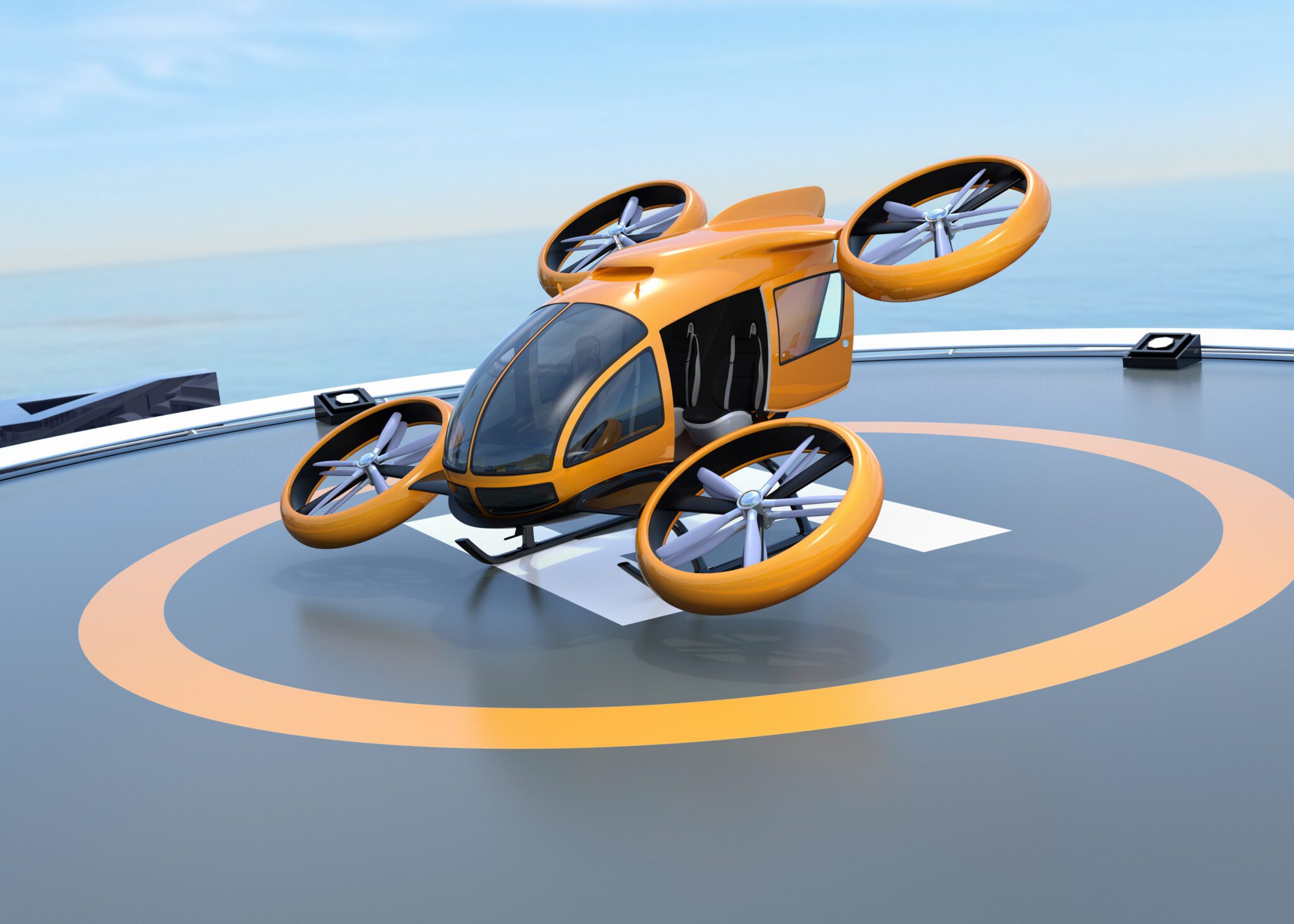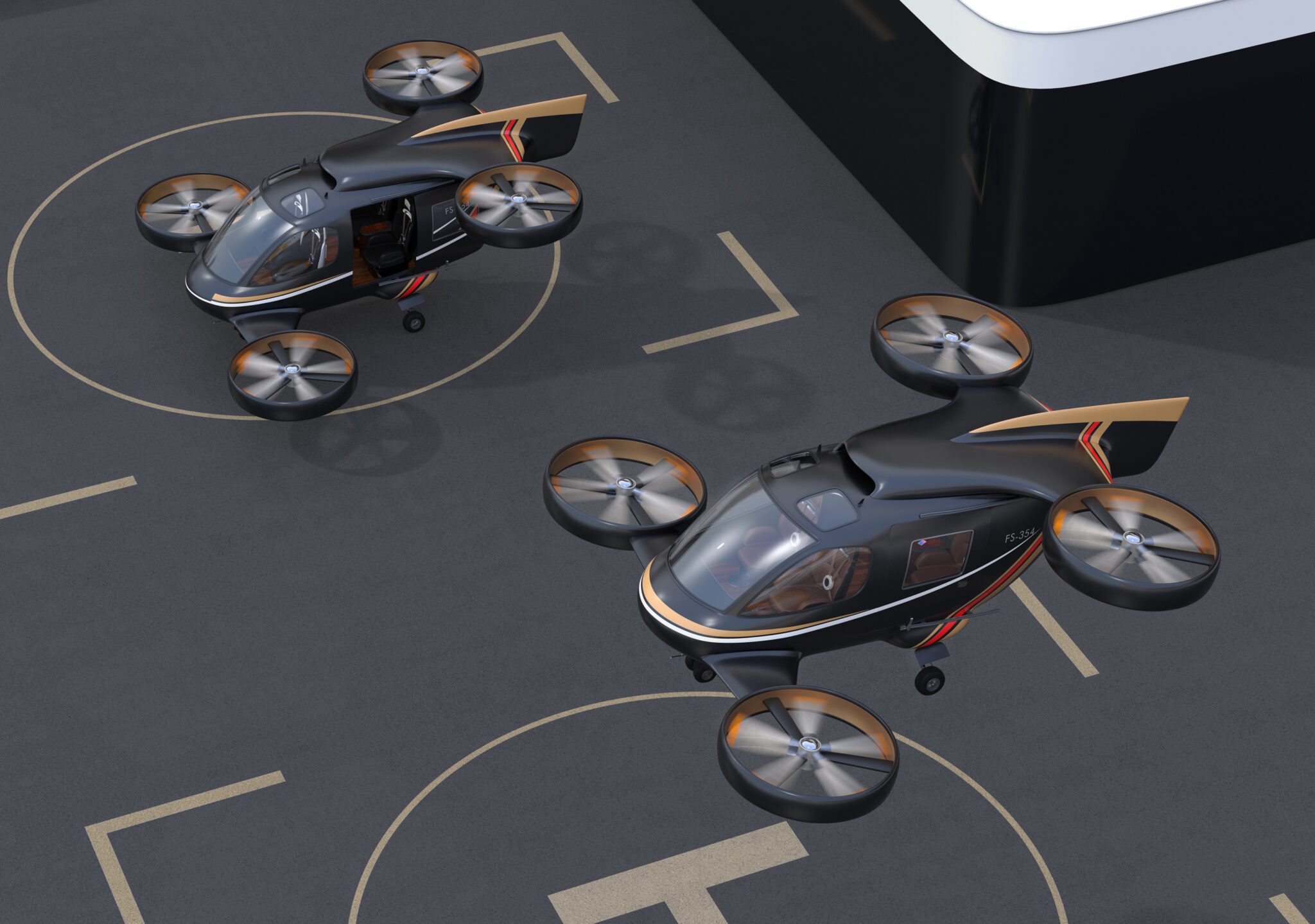eVTOL is Ready to Rise Above Urban Congestion
A new urban mobility solution for today’s congested cities, eVTOL enables passengers to take to the skies, no pilot required. Electrified, autonomous, and responsive, eVTOL offers an airborne route into a new transportation future.
A convergence of high-speed technologies, high-capacity batteries, and autonomous advancements have enabled the development of a new generation of electric vertical take-off and landing (eVTOL) vehicles. This new class of aircraft delivers the convenience of helicopter travel without the associated costs; smaller, lighter, and more affordable, some frequent flyers will buy their own eVTOL aircraft, and many others will be able to access this mode through a rideshare air taxi program. However, to achieve widespread acceptance, eVTOL vehicles must address unique challenges. Designers will need to find partners who can not only supply the components they need to develop these aircraft and associated infrastructure, but also provide the expertise to help guide them to the right solutions for this new and exciting market.

Designing an eVTOL ecosystem
City dwellers of the future will depend less on traditional vehicle ownership, instead embracing alternative transport solutions that enable them to travel independently without the high cost of ownership. Passengers will use personal devices to buy individual journeys, with eVTOL aerial vehicles playing an important role, as they can depart and arrive in confined spaces. In some cases, these aerial technologies will be able to act autonomously, taking to the skies without the assistance of a highly trained pilot. Even for vehicles that require a human operator, highly connected electronics systems will play a vital role in guidance, control, and safety, ensuring that passengers are conveyed rapidly to their destination.
Several successful demonstration projects indicate that this new mode will be available sooner than we think. Deloitte projects that eVTOL technology and infrastructure will be ready for the first wave of commercialization to begin before 2030. Advancements will continue as adoption accelerates in the 2030s.

Before this can begin, the safety of passengers and bystanders will be by far the most important requirement for the public to adopt eVTOL as an everyday transport solution. Acceptance by national aeronautical governing bodies will be vital in ensuring confidence in the safety of these vehicles. Designers of eVTOL aircraft are tasked with demonstrating the long-term robustness and reliability of the electronic systems that enable these vehicles.
The controlling electronics for eVTOL vehicles will draw upon technologies developed for the aeronautical, automotive, and even industrial markets. Guidance and collision avoidance will require high-speed imaging devices. The latest high-performance batteries provide the ideal power source for these new vehicles, but they depend on sophisticated battery management systems (BMS) to ensure they are charged and discharged safely.
Electronics at the Heart of eVTOL
The heart of eVTOLs is the central computing cluster, which serves as the brains of the vehicle, providing constant monitoring of the on-board systems and of the wider environment through sensors and other connected technologies. As these vehicles continue to evolve, the latest machine learning technologies will make rapid decisions to maintain safe and efficient operations. All communication, propulsion, and navigation networks will utilize high-performance cables and connectors to ensure the low latency communication needed for real-time decision-making.

Despite the sophisticated electronics inside eVTOL vehicles, they must remain low in weight. Reducing weight is vital for all aircraft, and specifying interconnects that prioritize SWaP (size, weight, and power) goals improves the cost of operation by making aerial vehicles more capable and fuel efficient. Connectors and passives have a significant impact on the weight of any vehicle, and so designers will turn to high-density components designed for the demands of the aerospace industry, where low weight and small size allows a greater useable payload. Aerospace-quality components are also designed to withstand tough operating conditions such as shock and vibration, making them an ideal solution for eVTOL vehicles. To provide reliable flight performance as well as meet to the significant safety requirements of air travel in an entirely new paradigm, designers will need to work with partners steeped in regulatory as well as technical expertise.
We are witnessing an exciting time in the transportation industry with the birth of a whole new means of travel. Designers of eVTOL systems depend on the latest components that deliver superior levels of reliability and safety. They must also understand the regulatory requirements for critical transportation systems while shepherding a new technology to the market. All these challenges can be eased with the help of an experienced and responsive supplier partner.
TTI has supported aerospace and transportation customers for over 50 years. To learn more about the latest electronic components for eVTOL development, visit TTI online.
Like this article? Check out our other New Technology, High-Reliability, Mil/Aero Market articles, and our 2024 Article Archives.
Subscribe to our weekly e-newsletters, follow us on LinkedIn, Twitter, and Facebook, and check out our eBook archives for more applicable, expert-informed connectivity content.

